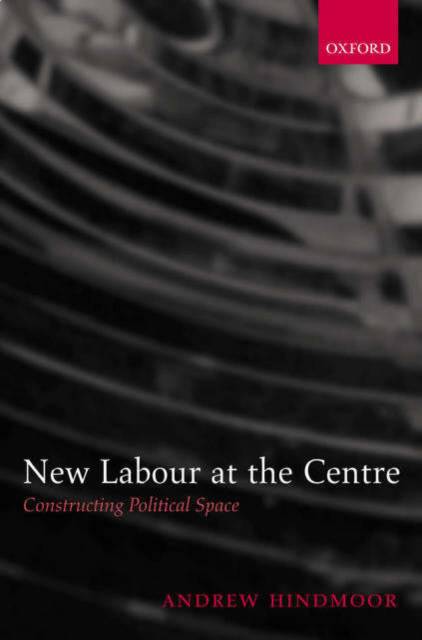
- Afhalen na 1 uur in een winkel met voorraad
- Gratis thuislevering in België vanaf € 30
- Ruim aanbod met 7 miljoen producten
- Afhalen na 1 uur in een winkel met voorraad
- Gratis thuislevering in België vanaf € 30
- Ruim aanbod met 7 miljoen producten
Zoeken
€ 102,45
+ 204 punten
Omschrijving
Taking as its starting-point Anthony Downs' seminal work, An Economic Theory of Democracy, this book draws upon insights generated within economics, political psychology, and the study of rhetoric to examine the way in which New Labour achieved and maintained its electoral hegemony from 1994. Journalists and politicians routinely attribute New Labour's electoral success to its occupation of the 'centre-ground'. This book is interested in the question of how New Labour moved to the right and towards the centre. The obvious answer to this question is that New Labour moved by changing its policies. Against this, the book contends that changes in policy cannot in themselves constitute a complete explanation of changes in spatial position. They cannot do so because there is no pre-given and fixed relationship between policies and position such that the rejection of one policy and the adoption of another moves a party from one position to another. Policies are not immutably left-wing, right-wing, or centrist and so, given that the position a party is thought to occupy is a function of the policies to which it is committed, parties are not immutably left-wing, right-wing, or centrist either. The relationship between policy and position and thereby between parties and position is
constructed and is in part constructed by parties themselves. New Labour did not simply move to the centre. It had to persuade the media, voters, and other parties that it had moved to the centre. New Labour achieved and maintained its electoral hegemony not simply by changing one set of policies for another. It achieved and maintained its hegemony by successfully constructing its policies as centrist.
constructed and is in part constructed by parties themselves. New Labour did not simply move to the centre. It had to persuade the media, voters, and other parties that it had moved to the centre. New Labour achieved and maintained its electoral hegemony not simply by changing one set of policies for another. It achieved and maintained its hegemony by successfully constructing its policies as centrist.
Specificaties
Betrokkenen
- Auteur(s):
- Uitgeverij:
Inhoud
- Aantal bladzijden:
- 232
- Taal:
- Engels
Eigenschappen
- Productcode (EAN):
- 9780199273140
- Verschijningsdatum:
- 27/01/2005
- Uitvoering:
- Hardcover
- Formaat:
- Genaaid
- Afmetingen:
- 236 mm x 157 mm
- Gewicht:
- 498 g

Alleen bij Standaard Boekhandel
+ 204 punten op je klantenkaart van Standaard Boekhandel
Beoordelingen
We publiceren alleen reviews die voldoen aan de voorwaarden voor reviews. Bekijk onze voorwaarden voor reviews.











